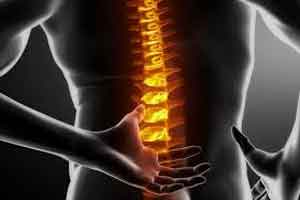- Home
- Editorial
- News
- Practice Guidelines
- Anesthesiology Guidelines
- Cancer Guidelines
- Cardiac Sciences Guidelines
- Critical Care Guidelines
- Dentistry Guidelines
- Dermatology Guidelines
- Diabetes and Endo Guidelines
- Diagnostics Guidelines
- ENT Guidelines
- Featured Practice Guidelines
- Gastroenterology Guidelines
- Geriatrics Guidelines
- Medicine Guidelines
- Nephrology Guidelines
- Neurosciences Guidelines
- Obs and Gynae Guidelines
- Ophthalmology Guidelines
- Orthopaedics Guidelines
- Paediatrics Guidelines
- Psychiatry Guidelines
- Pulmonology Guidelines
- Radiology Guidelines
- Surgery Guidelines
- Urology Guidelines
Exercise not acupuncture for people with low back pain :NICE draft guidance

The draft guideline recommends exercise, in all its forms (for example, stretching, strengthening, aerobic or yoga), as the first step in managing low back pain.
Massage and manipulation by a physiotherapist should only be used alongside exercise because there is not enough evidence to show they are of benefit when used alone.
The draft guideline also recommends encouraging people to continue with normal activities as far as possible.
The draft guideline no longer recommends acupuncture for treating low back pain because evidence shows it is not better than sham treatment i. Paracetamol on its own is no longer the first option for managing low back pain. Instead, the draft guideline recommends that non-steroidal anti-inflammatory drugs (NSAIDs) such as ibuprofen or aspirin should be tried first. Weak opioids, such as codeine, are now only recommended for acute back pain when NSAIDs haven’t worked or aren’t suitable.
Combined physical and psychological treatments (talking therapies) are recommended for people who have not seen an improvement in their pain on previous treatments or who have significant psychological and social barriers to recovery.
The updated draft guideline has been expanded to include people with sciatica, a painful condition typically caused by irritation or compression of the nerves which run from the lower back, through the legs and down to the feet.
Unlike the previous guideline, which only covered the management of low back pain that had lasted between 6 weeks and 12 months, the updated guideline covers people with low back pain or sciatica irrespective of how long they have had the condition
Professor Mark Baker, clinical practice director for NICE, said: “Millions of people are affected every year by these often debilitating and distressing conditions. For most their symptoms improve in days or weeks. However for some, the pain can be distressing and persist for a long time.
“Regrettably there is a lack of convincing evidence of effectiveness for some widely used treatments. For example acupuncture is no longer recommended for managing low back pain with or without sciatica. This is because there is not enough evidence to show that it is more effective than sham treatment.”
Professor Baker continued: “It is possible to reduce the impact that low back pain and sciatica can have on people’s lives. The draft guideline continues to recommend a stepped care approach and means people whose pain or function are not improving despite initial treatment should have access to a choice of further therapies.
“Our aim with this draft guideline is to give clarity and set out the most clinical and cost effective ways to treat low back pain and sciatica based on the best available evidence. We now want to hear from all those who provide care for people with these conditions in the NHS, as well as from people with the conditions and their carers, to ensure all relevant views are considered for the final guideline.”
According to musculoskeletal physician and GP Dr Ian Bernstein*, who is on the group developing the guideline: “The diagnosis of back pain includes a variety of patterns of symptoms. This means that one approach to treatment doesn’t fit all. Therefore the draft guidance promotes combinations of treatments such as exercise with manual therapy or combining physical and psychological treatments. The draft guideline also promotes flexibility about the content and duration of treatments, and the choices made should take into account people’s preferences as well as clinical considerations.”
A recent studyii found that lower back pain caused more disability than any other condition, affecting 1 in 10 people and becoming more common with increasing age.
In the UK it is estimated that low back pain is responsible for 37% of all chronic pain in men and 44% in womeniii and the total cost of low back pain to the UK economy is reckoned to be over £12 billion per yeariv.
Sciatica is also a relatively common condition, with estimates suggesting that as many as 40% of people will experience it at some point in their lives.
For full guidelines click on the following link:

Disclaimer: This site is primarily intended for healthcare professionals. Any content/information on this website does not replace the advice of medical and/or health professionals and should not be construed as medical/diagnostic advice/endorsement or prescription. Use of this site is subject to our terms of use, privacy policy, advertisement policy. © 2020 Minerva Medical Treatment Pvt Ltd